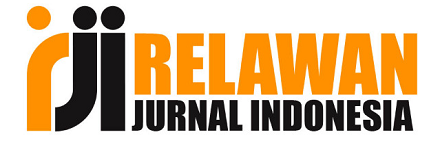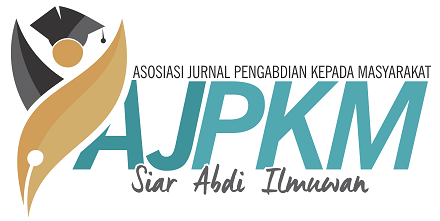Sosialisasi dan Edukasi Literasi Keuangan Untuk Warga ‘Aisyiyah Kabupaten Sukoharjo Guna Mengurangi Perilaku Konsumtif Pada Remaja dan Anak-Anak
DOI:
https://doi.org/10.33474/jipemas.v2i2.2694Keywords:
education, financial literacy, consumptive behaviour, childrenAbstract
People who are financially literate are people who have the attitudes, skills and knowledge to manage one's finances to meet financial goals that help achieve life goals. In fact, the majority of the citizens of 'Aisyiyah in Sukoharjo Regency have children who are extravagant or consumptive, like to follow trends, and are less able to prioritize their needs than their desires so that they cannot understand and apply financial literacy in life daily. Based on the conditions experienced by residents of  Aisyiyah, Sukoharjo Regency, there is a need for financial education and outreach for adults to be able to be applied to their children. The education and socialization program provided is expected to reduce consumptive behavior in children and provide benefits to the residents of the community ‘Aisyiyah Sukoharjo Regency to develop knowledge and understanding of financial literacy education and the ability to manage finances well.
References
Ajzen, I. (1988). From intentions to actions: attitudes, personality, & behavior. Chicago: Dorsey Press.
Ardiana, M. (2016). Kontrol Diri, Pendidikan Pengelolaan Keuangan Keluarga, Pengetahuan Inklusi Keuangan Siswa Pengaruhnya Terhadap Perilaku Menabung Siswa SMK se-Kota Kediri. Jurnal Ekonomi Pendidikan dan Kewirausahaan Vol. 4. No. 1.
Belch, M.A., et al. (1982). Psychophysiological and Cognitive Responses to Sex in Advertising, in NA. Advances in Consumer Research. Volume 09, eds. Andrew Mitchell, Ann Abor, MI : Association for Consumer Research, Pages: 424-427
Durband, D.B., & Britt, S.L. (2012). Student Financial Literacy: Campus-Based Program Development p127.
Forte, S.P., Taylor, E.W., Tisdell, E.J. (2014). Financial Literacy and Adult Education: New Direction for Adult and Continuing Education. number 141. New York: Wiley Online Library.
Friedline, T., Elliott, W., & Chowa. (2013). Connections with Banking Institutions and Diverse asset Portfolios in Young Adulthood: Children as potential future investor. Children and Youth Service Review. 35, p994-1006.
Gudmunson, C.G, & Danes, S.M. (2011). Family Financial Socialization: Theory and Critical Review. Journal of Family and Economic Issues. 32 (4). pp 644-667.
Mihalcova, B., Csikosva, A., & Antosone, M. (2014). Financial Literacy-The Urgent Need Today. Social and Behavioral Sciences. Volume 109, p317-321.
Murdaningsih, D., & Septyaningsih, I. (Januari, 2017). Survei OJK: Pria Lebih Paham Industri Keuangan Dibanding Perempuan diakses melalui http://www.republika.co.id/berita/ekonomi/keuangan/17/01/24/oka7d7368-survei-ojk-pria-lebih-paham-industri-keuangan-dibanding-perempuan pada tanggal 23 November 2017.
Otoritas Jasa Keuangan (OJK). (2016). Survey National Literasi dan Inklusi Keuangan 2016-OJK diakses melalui website http://www.ojk.go.id/id/berita-dan-kegiatan/siaran-pers/Documents/Pages/Siaran-Pers-OJK-Indeks-Literasi-dan-Inklusi-Keuangan-Meningkat/17.01.23%20Tayangan%20%20Presscon%20%20nett.compressed.pdf pada tanggal 23 November 2017.
Scheresberg, D.B & Carlo. (2013). Financial Literacy and Financial Behavior among Young Adults: Evidence and Implication. Advancing Education in Quantitative Literacy. Volume 6 (1552), Article 5.
Te'eni-Harari, T., et.al. (2009). The importance of product involvement for predicting advertising effectiveness among young people. International Journal of Advertising, 28(2), pp. 203–229.
Te'eni-Harari, T. (2013). Explaining the Relationship Between Media Exposure and Early Adolescents’ Body Image Perceptions. Journal of Media Psychology, 25, pp. 129-141.
Te’eni-Harari, T. (2016). Financial Literacy Among Children: The Role of Involvement in Savings Money. Young Consumers. Volume 14 (2), pp 197-208.
Yolanda, F., & Zuraya, N. (Desember, 2013). Tahun depan, OJK Bidik Ibu Rumah Tangga diakses melalui website http://www.republika.co.id/berita/ekonomi/keuangan/13/12/02/mx5rm3-tahun-depan-ojk-bidik-ibu-rumah-tangga pada tanggal 23 November 2017.
Zaichkowsky, J.L. (1994). The Personal Involvement Inventory: Reduction, Revision, and Application to Advertising. Journal of Advertising. Volume 23 (4), pp 59-70.
Zuraya, N. (November, 2013). OJK Luncurkan Cetak Biru Literasi Keuangan Indonesia diakses melalui website http://www.republika.co.id/berita/ekonomi/keuangan/13/11/19/mwhvze-ojk-luncurkan-cetak-biru-literasi-keuangan-indonesia pada tanggal 23 November 2017.
Downloads
Published
How to Cite
Issue
Section
License
.









